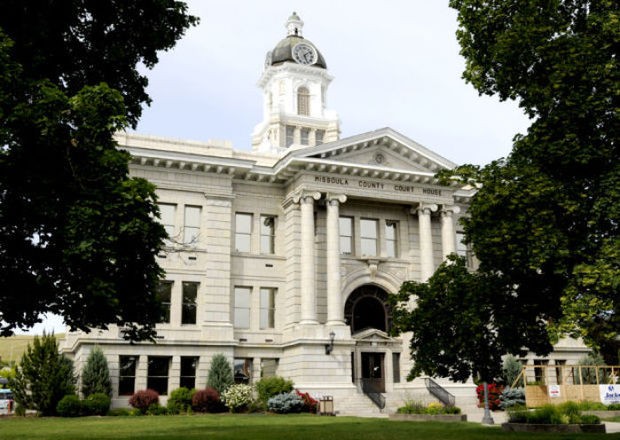Missoula school bond measure planning costs top $250 000
Post on: 23 Октябрь, 2015 No Comment

Related Documents
Missoula-area residents put replacing old boilers and roofs at the top of their priority list for work on school buildings, with a majority su Read more
Rundown, underused and uninviting were just a few words members of the Missoula County Fairgrounds Advisory Committee used Monday to describe Read more
How do voters weigh local control versus how much they pay in taxes? Read more
On a warm August day last year, leaders of the local arts scene gathered around a table in downtown Missoula to consider their collective stan Read more
Missoula County Public Schools Superintendent Alex Apostle’s contract was continued under current terms by school board trustees during their Read more
Nearly $88 million in upgrades and new construction in the elementary district and roughly $70 million in work to high school buildings is the Read more
A $25,000 phone survey was the latest expenditure added to more than $241,000 in spending on long-term facilities planning in advance of a likely bond request by Missoula County Public Schools.
CTA Architects and Engineers was awarded the initial $152,698 contract to complete a facilities study after a competitive bid process. The contract allowed for up to another $7,694 for pursuing several grants.
As of Dec. 31, CTA had received $241,702.64, which includes: $31,227.78 to WGM Group for location and site assessment, GIS, boundary spreadsheets and maps; $33,122.68 to Partners Creative for a communication plan; $10,000 to McKibben Demographic Research for enrollment forecasts for MCPS schools and $5,800 for enrollment forecasts for feeder schools; $19,000 to Eclipse Engineering for structural assessments; and $12,500 to Harstad Strategic Research for a phone survey.
Another $12,500 remains to be paid to Harstad that is not included in the total expenditures through December.
To pay for the initial contract, $23,000 came from YMCA rent payments for the former Mount Jumbo Elementary building and another $36,000 from Walla Walla College’s rental payments for the same building.
An additional $36,000 from Missoula International School’s rental payments for Prescott School, $20,000 from stadium rentals, $40,000 from other one-time-only sources and $50,000 from a Quality Schools Planning Grant also have been used.
For the entirety of the work, including contract modifications, the district expects to spend just over $267,400. The difference between the total and what has been paid largely will come from proceeds of elementary rentals and the high school building fund. The district also has spent $712 to rent buses for facilities tours.
The survey should be the last major expense in the planning process, said Pat McHugh, the district’s executive director of business and operations.
Some of the funds already have largely been replenished because of lease payments, McHugh said.
The district collects roughly $60,000 annually from Walla Walla for its use of Mount Jumbo and $55,000 from Missoula International School for Prescott, he said.
Traditionally, those funds have been left to accumulate for use in emergency situations or facilities improvement work, he said, adding the bond planning expenses have been facilities related. So it’s a good use of those funds.
Even with renewable lease agreements, the funds are considered one-time money. If the district used rent payments to fund ongoing services, such as salaries, and the leases were not renewed, MCPS would have to pull from other sources to fill the holes, McHugh said.
It’s sort of an opportunity for the school district to be conservative, in the sense that you have a funding source that you can use. It’s much like a savings account, he said.
Trustees opted to expend money and contract with professionals for the planning work to have solid answers to long-term questions, said Joseph Knapp Jr. the MCPS board chairman.
We paid for the level of expertise and that’s like so many things in life – you want to make sure that when you’re dealing with large dollar figures, we want to make sure we’re doing this right, Knapp said.
While the costs so far may seem like a lot of money, it breaks down to roughly $25 per student and the work covers 17 MCPS schools, four other occupied buildings, and other properties that sit vacant or that are undeveloped, Knapp said.
The finished document, Smart Schools 2020, assesses the district’s facility needs for the coming 20 years, including deferred maintenance, safety and technology infrastructure needs, he said.
Unexpected things can happen. But we wanted the best information, as limited as it would be, to make those decisions, he said.
The plan calls for the rebuilding of two elementary schools and renovations at several other district buildings.
The amounts for separate K-8 and high school bonds remain to be determined, with the intent to place bond measures on the November 2015 ballot.
Between now and then, the district will finalize details of the requests, as well as continue community engagement.
MCPS also plans to complete three demonstration projects over the summer to illustrate the impact larger bond measures would have.
When school board members approved the Quality Schools Grant to help defray costs, they also OK’d a $90,000 match for $1 million in state funds.
During their regular monthly meeting Tuesday, trustees will discuss whether or not to expend roughly $52,000 ahead of the grant’s formal approval by the Montana Legislature.
If the bond requests are unsuccessful, the work paid for by the district to this point still will be useful, Knapp said.
If the bond issue goes down … that doesn’t mean the problems go away. They’re still there, he said, adding that the district likely will have to deal with deferred maintenance issues in a less comprehensive way than money from a bond measure would allow.
***
The recent survey, though, showed that the majority of likely voters support a bond measure for the elementary and high school districts.
Of the 502 respondents who completed the roughly 15-minute phone survey, 74 percent own their current residence, 25 percent rent and 1 percent live with parents or others.
People who took the survey ranked replacing old boilers and roofs as the top priority, followed by upgrading computer systems to handle high-speed Internet in buildings, expanding building capacity to handle growing enrollments, renovation of older buildings to create more flexible space, and renovating entrances for safety.

Fifty-five percent of respondents said funding for MCPS should be increased, and only 26 percent said that school property taxes are too high. However, the main concern of survey takers was the cost of a bond measure and how much it would cost a homeowner each year.
The owner of a $200,000 home would pay an additional $156 a year for an $85 million K-8 bond and another $60 a year for a $55 million high school bond.
Although the survey gauged voter support for a $110 million elementary bond, the district’s elementary bonding capacity is $85 million.
“Basically we want to be in the 60s (percent approval),” Michael Kulisheck told trustees and district leaders during a committee meeting last week.
That 30 percent of survey respondents are definitely in favor of a $110 million elementary bond measure and the same percent are definitely for a $75 million high school bond measure is a ‘green light’ for moving forward, the senior vice president of Harstad Strategic Research said.
However, percentages tend to slip as a bond election nears, he said.
“You have to run a great campaign to win. You can’t take anything for granted,” he said.
The school district can’t lobby for public support of bond measures, and so a citizen committee has formed to advocate the importance of the money and what it would accomplish.
We need citizens to learn about the needs of our schools and to support and champion the effort, said Susan Hay Patrick, who is spearheading the recently formed Friends of Public Education/Smart Schools 2020 group.
A similar group formed to promote a $122 million bond measure passed by Billings voters in November 2012.
Roughly 30 people, including representatives of the business and education communities, have joined the Missoula effort, Hay Patrick said.
The Friends of Public Education group will spend money to support its efforts and already has raised nearly $100,000, which Hay Patrick estimated is what it will cost to hire a firm to formulate a communications and outreach plan.
I think it shows that local businesses and individuals realize that we all have a stake in ensuring that our kids have outstanding facilities and that they understand that this is an investment in the future of our community that benefits us all, she said.
The largely supportive results of the recent poll also are encouraging, Hay Patrick said.
I think it gives us confidence that our efforts can be successful, she said.
I know we ask a lot of our voters. We ask a lot of our taxpayers. And I think there’s always the possibility of fatigue when people are asked to pay for new things, and I was pleasantly surprised that the poll results showed that people understood that this is very important, she added.
In March, trustees plan to finalize details of the bond measures, including the amounts, and then will finalize the wording in April, Knapp said.
The survey helped show that the district is moving in the right direction and is reasonably in sync with voters, he said.
That does not in any way, shape or form tell me that this is a done deal or a slam dunk, he said. We have a lot of work to do to justify to the community what the final decision is, as far as expenditures.














